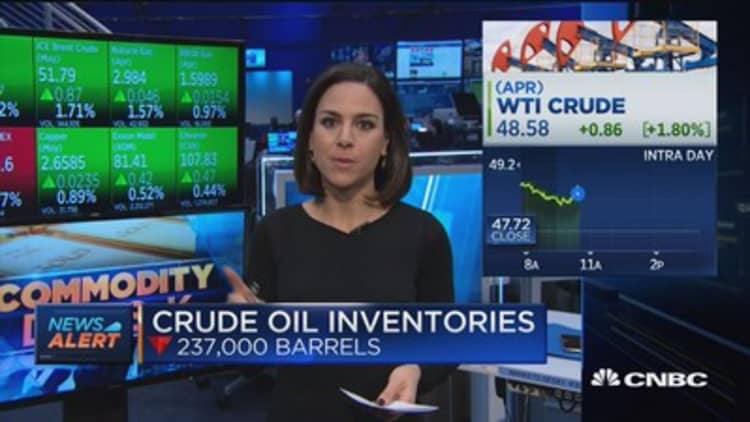
Shares in Asia see-sawed on Thursday but closed higher, as investors digested monetary policy decisions from the Bank of Japan, the People's Bank of China and the Federal Reserve.
The Bank of Japan held monetary policy steady and maintained a positive view on the economy, signalling that no expansion of monetary stimulus was due in the near future, Reuters reported.
The Japanese benchmark, , was up just 0.07 percent or 12.7 points at 19,590.14 as the yen strengthened against a weaker dollar.
And the People's Bank of China raised its short-term interest rate by 10 basis points on both medium-term lending facility loans and its open market operation reverse repurchase agreements. This is the third hike in three months, and a day after Chinese officials warned that tackling debt risks would be a priority.
China's finished up 0.86 percent or 27.8 points at 3,269.54 and the Shenzhen composite closed 0.96 percent or 19.5 points higher at 2,046.3.
Shenzhen-listed ZTE resumed trade on Thursday after an eight-day hiatus, and added 10 percent to 16.81 Chinese yuan per stock, which was also the maximum allowed move on the exchange. The telecommunications equipment supplier had plead guilty to violating U.S. sanctions on Iran, and paid nearly $900 million in settlements.
Down Under, the ASX 200 closed up 0.2 percent or 11.8 points at 5,785.8.
Australia's unemployment rate in February rose to 5.9 percent, higher than the expected 5.7 percent.
"The unemployment rise to 5.9 percent is a bit of a slap in the face for Reserve Bank of Australia governor Philip Lowe who, only recently, said he'd like to see it move lower. This makes it the highest since January 2016 and above the 12-month average of 5.7 percent," said Matt Simpson, chief market analyst at ThinkMarkets, in a Thursday note.
The Australian government is set to spend up to A$2 billion ($1.54 billion) to expand the output of the Snowy Mountains Hydroelectric scheme by up to 50 percent to help solve a power crisis.
South Korea's Kospi closed up 0.8 percent or 17.1 points at 2,150.08, while Hong Kong's surged 1.77 percent by mid-afternoon.
The Federal Reserve raised its benchmark interest rate by 25 basis points to a target range of 0.75 percent to 1 percent in a widely-telegraphed move. The rate hike comes amid growing confidence that the economy is poised for more growth.
The central bank also indicated that it still expects three moves, as each Fed members' expectations for where rates will be in coming years changed little from the last meeting.
"Even though the dot plot is not relevant because so much can change, the Fed reminded us all of the gradual nature of their expected behavior on this rate hike cycle," said Peter Boockvar, chief market analyst at The Lindsey Group, in a Wednesday note.
U.S. stocks closed higher on Wednesday, as oil prices bounced back and the Fed took a less hawkish stance than expected.
The was up 0.54 percent to finish at 20,950.1, the S&P 500 rose 0.84 percent to close at 2,385.26 and the composite added 0.74 percent to 5,900.05.

During Asian trade, Brent crude futures were up 0.66 percent to $52.15 a barrel, and U.S. crude gained 0.57 percent to $49.14.
Oil prices climbed for the first time in a week on Wednesday during U.S. hours on a surprise drawdown in U.S. crude inventories. The International Energy Agency (IEA) also suggested that the Organization of Petroleum Exporting countries output cuts could create a crude deficit in the first half of 2017, Reuters reported.
The weaker dollar after the Fed raised rates as expected also helped to make the greenback-denominated crude less expensive for holders of other currencies.
The dollar index, which tracks the greenback against a basket of major currencies, slipped below the 101 handle to trade at 100.5.
Against the dollar, the yen was stronger at 113.3 compared to levels above 114 yesterday and the Australian dollar was stronger at $0.7695 and briefly touched $0.7700 levels earlier in the session.

